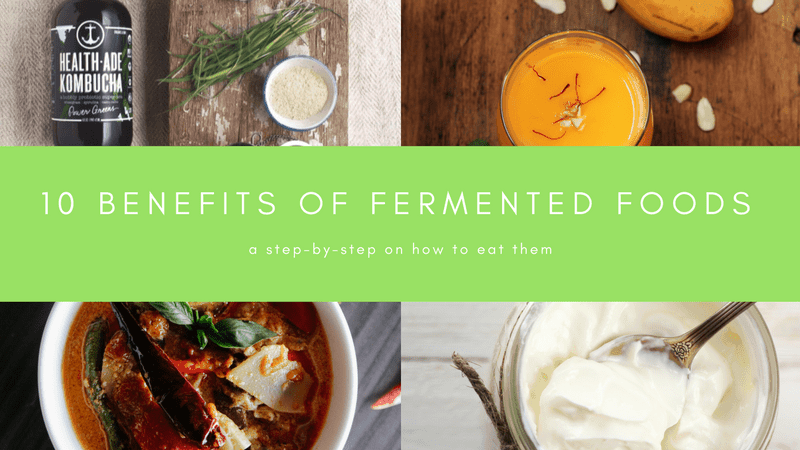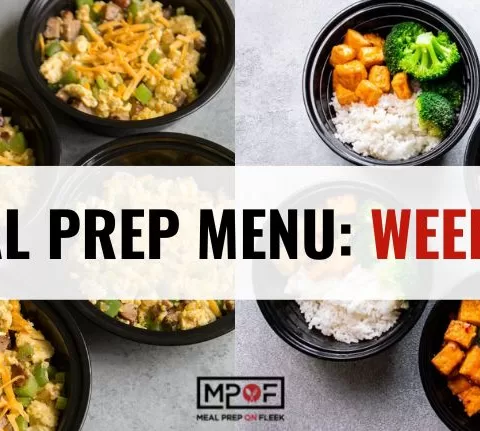10+ Health Benefits of Fermented Foods and How to Eat Them
When the western world discovered Korean drama series several years ago, it was also exposed to one of Korea’s favorite food staple, kimchi. The traditional side dish is composed primarily of pickled vegetables, usually napa cabbage and Korean radishes, salt and spices.
Not only is kimchi recognized for its unique taste, but also for its nutritional value. The dish is high in dietary fiber and vitamin C while low on calories. The reason kimchi is good for you can partly be attributed to how the dish is made.
People have used the process of fermentation for centuries as a way to preserve food. For instance, cucumber is mixed with vinegar and spices then stored in a jar for weeks.
Kimchi is stored for days or months, depending on the maker’s taste preference. Beer is fermented for at least a couple of weeks.
When food is fermented, microorganisms like yeast and bacteria break food down into something simpler. Research shows that fermented vegetables and other food and drinks give your body “good bacteria” which can influence your metabolism and immune system.
Here are at least ten fermented foods and why you should include them in your diet.
-
Sauerkraut
Sauerkraut or “sour cabbage” is made by mixing salt with shredded fresh cabbage and pressing down on the mixture to release water and start fermentation. Sauerkraut has a lot of lactobacilli which could help in treating eczema, ulcerative colitis, irritable bowel syndrome, and scurvy.
Add sauerkraut to your hot dog, Reuben sandwich, or sausages. Better yet, make sauerkraut slaw for a healthy summer picnic.
-
Miso
This traditional Japanese paste does not only make an appearance as soup but also in a lot of Japanese dishes. Miso is made from fermented soybeans, rice, wheat, barley and buckwheat with koji-kin, a type of mold used to ferment soybeans.
Aside from giving dishes a distinct taste, miso is also rich in vitamins B, E, K and folic acid. The Japanese use miso as a soup base, a dip or a coating.
-
Yogurt
Yogurt is probably the first thing that comes to mind when talking about foods rich in probiotics. Yogurt that boasts of having “Live & Active Cultures” probably has 100 million probiotic cultures per gram when manufactured.
These bacterial cultures help in breaking down the milk, consequently nourishing your gut. Yogurt helps cleanse your digestive tract which plays a vital role in your immune system. There are many varieties of yogurt to choose from.
If you cannot tolerate dairy, you might want to try yogurt that is made from coconut or almond milk. Do not go for yogurt that has sugar to get the best results.
-
Kefir
Kefir is the “drinkable yogurt.” It is a mixture of cow’s or goat’s milk and kefir “grains” which are cultures of yeast and lactic acid bacteria. With a load of probiotics like its fermented dairy cousin, kefir helps reduce irritation in the intestines.
It gives the body a lot of B vitamins, vitamin K, calcium, protein, and phosphorus. Some say that kefir might even be a better alternative to yogurt since it has about 30 different microorganisms, which makes it more potent.
-
Tempeh
Tempeh is similar to miso in the sense that it is from fermented soy beans and a yeast starter. It has iron, potassium, magnesium, calcium, and protein and essential amino acids.
It breaks down very easily once digested and is a favorite in many vegetarian dishes as a replacement for meat. Tempeh has a nutty flavor and chewy texture, so it takes a bit of getting used to.
-
Kombucha
Kombucha is a drink, specifically, tea. It is made by mixing black tea, natural sugars, bacteria, and yeast. It is a tangy drink that is rich in probiotics, B vitamins, and acetic acid.
People with diabetes favor kombucha because it helps stabilize blood glucose levels and makes you feel full. Kombucha also detoxifies the body, prevents arthritis, and improves one’s immune system.
-
Kvass
Kvass is another fermented drink and comes from Eastern Europe. It is traditionally made with rye bread and an assortment of vegetables, but now people just use fruit, veggies, salt, bacteria, and yeast.
It is also fizzy and tangy like kombucha. Kvass boasts of having tons of probiotics as well, but the health benefits depend on the type of vegetables and fruits used to make the drink.
If made with rye bread, kvass offers the body vitamins B1 and B6, magnesium, amino acids, phosphorus, and pantothenate. Because it contains simple sugars, kvass has an appealing taste.
-
Pickles
Do not exclusively think of fermented cucumbers. In general terms, pickles mean fruits or vegetables that have been preserved using acidity. Pickling is one way of fermenting food.
Examples of pickled vegetables are cucumbers, beets, cauliflower, green beans, celery, green chili peppers, okra, Brussel sprouts, and even corn. Did you know you can pickle fruits as well?
Pears, figs, lemons, grapes, mangoes, pineapples, and watermelon rinds are just some examples of fermented fruits that you might fancy. Like other fermented goodies, the pickled food contains healthy bacteria that help break down cellulose and natural sugar inside your body.
Moreover, researchers have noted that fat-soluble vitamins in pickled vegetables may even be more concentrated than in regularly cooked veggies.
-
Lassi
Lassi figures significantly in dishes from India. Lassi is a combination of yogurt and milk, preferably goat’s milk. Fruits and spices are added at times to make the drink more nutritious and taste richer.
Lassi gives the body protein, probiotics, and calcium. It helps in digestion and constipation as well as improves muscle and bone development. For vegan drinkers, you can make lassi with yogurt made from coconut or almond milk.
Drink lassi like a smoothie, especially in the summer like what people in India do.
-
Sourdough
Sourdough is a type of bread that tastes, well, a little sour. This is because the dough is fermented and allowed to leaven naturally. Unlike regular bread with has baker’s yeast, sourdough uses wild yeasts and bacteria.
The bacteria in sourdough are similar to that used to turn milk into yogurt and cheese. When the dough is fermented, the phytic acid in the grains is broken down so the body can quickly absorb nutrients like calcium, magnesium, iron, and zinc.
Otherwise, the phytic acid will bind with the minerals and make these unavailable. Use sourdough as a stuffing or bread pudding. Break it into bread crumbs or roast it with chicken. Because of its consistency, you can also use it as a bread bowl for soup.
-
Tamari
Tamari is similar to soy sauce because it is made from fermented soy beans and can also be used for marinades, dressings or as a condiment. However, unlike soy sauce, tamari contains little or no wheat at all.
This is the reason tamari can be a great substitute for people who want gluten-free soy sauce. Also, tamari has a richer, sweeter, and deeper taste whereas soy sauce has a saltier flavor.
As with sourdough, fermentation breaks down the phytic acid found in soy beans so the body can get the nutrients it needs. You can get vitamin B3, protein, and manganese from tamari.
-
Kimchi
Last, but not the least, is kimchi. Did you know that kimchi has been called the “super food” because of how healthy it supposedly is? As mentioned at the start of this article, kimchi is a popular fermented dish.
In fact, kimchi has its refrigerator in many Korean households (primarily because of its pungent smell), and there are over 300 types of kimchi. Aside from its anti-aging properties, kimchi has been found to help prevent cancer, obesity, constipation, as well as reduce cholesterol.
Kimchi is also high in vitamin B1, B2, C, and A, all of which boost your body’s energy. Make your kimchi spicy or not. Eat it as a side dish, a snack, or a meal when paired with rice. Whichever way you have kimchi, you are sure to be on track for healthier insides.
Who knew bacteria can do wonders for you and your body?
Good bacteria, that is. Fermentation does not only make your food last longer or taste better.
Fermented foods also enable you to have a healthier body and consequently live a longer life. Thanks to fermented foods like yogurt, sauerkraut, and kimchi, you can cleanse your body of impurities and feel better and stronger.
Fermented foods also help you fight diseases and have more strength and opportunities to do the things you love.
Indeed, there are a lot of benefits fermented foods can bring to one’s well-being. If you want to start eating more nutritious food, maybe you should start incorporating one or two of these fermented goodies in your diet. Which of these fermented foods would you like to try?







